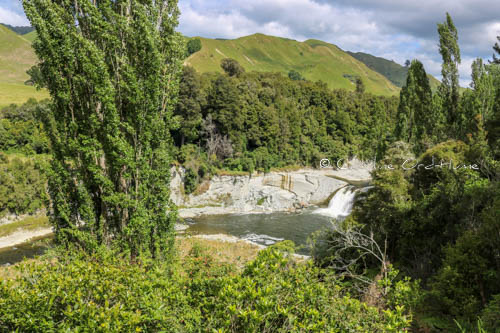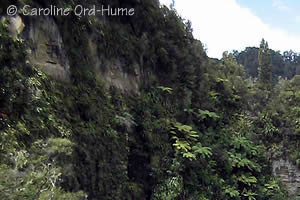- Home ›
- NZ National Parks ›
- Whanganui National Park
Whanganui National Park
Whanganui National Park was set up in 1986, is in the southwest of the North Island with a wealth of unique history and culture to be explored in the region.

Whanganui River in Whanganui National Park
Of particular importance to the experience of Whanganui Park is Māori culture and use of the river for communication and trade between tribes at distances as far reaching as the regions of the Bay of Plenty, Taranaki, Taupo, and Waikato.
When you tour areas of New Zealand such as this, learning about Māori culture and history will give you a far richer and more memorable experience.
The desirability of Whanganui to humans has mostly been due to the navigability of the River, it’s the longest in New Zealand that can be navigated its 290km length and has been used for transportation of people and goods throughout history.
Activities in Whanganui National Park
River Kayaking and Boating
The 45 kilometre Whanganui Journey is named as one of the Great Walks (a river journey).
Its route through forests from mountains to the Tasman Sea can be experienced by kayak! To do this journey by kayak from Taumarunui to Pipiriki usually takes five days but if you want a shorter option there is a three day version that runs between Whakahoro and Pipiriki.
It is possible to canoe along the River for more than 200 km and pretty much suitable for all abilities. More about the Whanganui Journey...
Apart from the kayaking you can experience various other river trips, cruises, and jet boat tours.
Walks
There are numerous choices of hiking and tramping tracks that take you through forests and bush land. Here's an example
- Matemateaonga track is really popular as it along an historic trail used by both Maori and other settlers. 42km 3 to 4 day one way
- Atene Skyline Track , 6 - 8 hr
- Atene Viewpoint Walk, 1 - 2 hr
- Bridge to Nowhere Walk, 1 hr 30 min return 3 km
- Mangapurua/Kaiwhakauka Track tramping 2-3 days / cycle trail 1 day
Fishing
Brown and rainbow trout are found in the Whanganui River and its tributaries. Always enquire about fishing permits at visitor centres before doing any fishing in New Zealand. Camp sites can often give advice on local fishing and/or hunting activities.
Whanganui National Park Attractions
Wildlife
The lowland forests along the river provide important habitat for native birds and wildlife. As you can imagine, the whio / blue duck absolutely loves the many rivers and streams in the park just as much as forest dwelling birds love the native bush.
Introduced pests threaten native bird species and so parks such as this have to be managed to keep the number of pests down, which includes household cats! The variety of birds supported in the Whanganui River valley include Tomtits and Robins, Bellbirds, Grey Warblers, Fantails, Tui, Kaka, Kakariki, and Falcons.
There is also a good number of North Island Brown Kiwi in the park that needs a lot of protection from predators such as domestic cats, rats, and stoats... Kiwi can’t fly away!
NZ Bush

Some of the vegetation you can expect to find in Whanganui National Park include: Podocarp-hardwood lowland forest, Timu, Miro, Totara, Kamahi, Tawa, Kahikatea, Mataī, Nikau palm, Rata, Beech, and a wide variety of large and small ferns.
You may see some orchids on the ridges, fuchsia, hutu, and daisy on the river banks. There are also areas of what used to be farm land that’s since been abandoned and now shows evidence of regeneration mixed in with the left over plant life of previous settlements along with Silver Ferns and Manuka bushes.
Outdoor Safety
Whanganui Accommodation
Huts and campsites are dotted along the river.
Settlements in the area with a range of accommodation include Whanganui, Taumarunui, Ohinepane, Whakahoro, and Pipiriki.